New Discoveries: Paper Gardens: A Collection of Needlework Patterns Drawn by Lady Jean Skipwith
Emily Wells
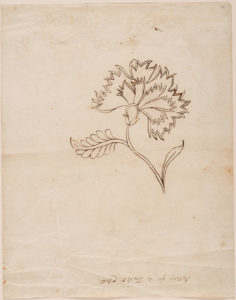
For generations, a garden bloomed between the pages of a notebook. Opening its marbled paper covers reveals pages of mathematical exercises, as well as a collection of more than 600 floral needlework patterns drawn by Lady Jean Skipwith during the late eighteenth and early nineteenth centuries. Born to Hugh and Jane Miller of Prince George County, Virginia, Jean spent much of her adolescence and young adulthood in Scotland. In 1788, she married her widowed brother-in-law, Sir Peyton Skipwith, and moved to Prestwould plantation in Mecklenburg County, Virginia.[1] The following year, she gave birth to her first daughter, Helen. As a girl, Helen used the notebook that would later house her mother’s needlework patterns to demonstrate her knowledge of addition, subtraction, multiplication, and division. Once completed, its pages testified to her ability to manage household accounts, convert currencies, and calculate the weight of valuable goods. The Colonial Williamsburg Foundation acquired the … Continued
Potters of the Yadkin Valley
Stephen C. Compton
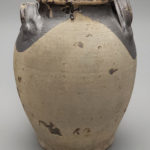
Introduction Pottery collectors exploring North Carolina auctions, estate sales, and antique shops sometimes discover unsigned, lead-glazed earthenware pottery that has a perceived antiquity. Accompanying provenance is rare, and often the first assumption is that, if the vessel is not from Pennsylvania, then it is eighteenth- or early-nineteenth-century Moravian ware from North Carolina’s Bethabara or Salem potteries. However, recent research has shown that some of the earthenware formerly attributed to the Moravians was instead created by potters in Orange (now Alamance) County’s St. Asaph’s District, Quaker potters in Guilford and Randolph counties, Rowan County potters, and by Catawba Valley potters in Lincoln and Catawba counties who preceded that region’s alkaline-glazed stoneware makers.[1] This article argues that from the second half of the eighteenth century into the early years of the twentieth century, some largely unknown Yadkin Valley potters working in present-day Yadkin, Davie, and Wilkes counties, including Peter Myers, Seth Jones, … Continued
Thomas S. Doron: Initial Reflections on the Life and Work of a Montgomery Cabinetmaker
Christopher Lang
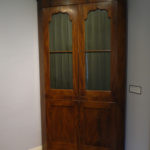
In 2001 Burritt on the Mountain, a historic house and park in Huntsville, Alabama, acquired a handsome corner cupboard (Figure 1) that is signed and dated “Thomas S. Doron Montgomery Ala July 1852” on the bottom of a hidden drawer fitted into the lower rail (Figure 2).[1] Nearly twenty-five years later, little remains known about the corner cupboard’s maker, Thomas S. Doron. Because of the scant knowledge about Doron and his work, the discovery of his signature raised several questions. Seemingly the most basic, but also the most foundational, who was he? Where was Doron from, how did he come to be working in Montgomery, and where in the city did he conduct business? Did Doron set up his own shop or work with more established craftsmen in the city? Were familial connections important to his business and life in Montgomery? Now that a signed piece has been identified, might … Continued
Willis McKeand: A Recently Discovered Urban Style Cabinetmaker of Goochland County, Virginia, 1802–1815
J. Christian Kolbe
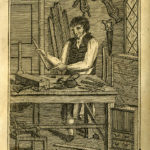
This article examines the life and work of Willis McKeand (1782–1860), a Virginia cabinetmaker overlooked in the commonly consulted decorative arts literature. Particular attention is paid to his career in Goochland County, Virginia, from 1802 to 1815. Despite his absence in the literature, Willis McKeand is a particularly well-documented example of southern cabinetmakers escaping local and northern competition in urban areas and moving to the hinterlands and small towns.[1] The article deals first with McKeand’s training in Richmond under Samuel Swann and George and James Taylor. In this section, previously unknown information is provided on the Swann-Taylor cabinetmaking shop (Figure 1). The following section discusses the urban style furniture produced for McKeand’s patron, Thomas Miller, of Goochland County. The third section explores the working connection between Willis McKeand and James McAlester, a cabinetmaker who worked in McKeand’s shop and who also produced urban style furniture in the counties of Goochland … Continued
2025 Editor’s Welcome
Kim May
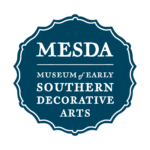
It is with deep gratitude that I welcome you to the 2025 issue of the Journal of Early Southern Decorative Arts, a milestone volume that marks the Journal’s fiftieth anniversary. For half a century, this publication has provided a forum for new scholarship, discoveries, and perspectives on the material culture of the early South. From its first issue in 1975 to today, the MESDA Journal has carried forward the mission of the Museum of Early Southern Decorative Arts (MESDA): to foster deeper understanding of the material culture and craft traditions of the early American South through rigorous research and thoughtful interpretation. This anniversary issue offers both reflection and renewal. Chief Curator Johanna M. Brown contributes a celebratory essay that looks back on MESDA’s history, from its founding vision, its decades of pioneering scholarship, to its enduring role as a center for research. This essay is especially fitting as 2025 also … Continued
A Story Worthy of the Telling: Sixty Years of MESDA
Johanna Brown
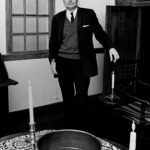
The Seed of an Idea On December 16, 1959, Frank Horton wrote a letter to then-president of Old Salem Museums & Gardens, Charles B. Wade. After years serving as director of restoration for Old Salem and overseeing the revitalization and restoration of the historic Moravian town, Horton proposed an idea. He wrote: The subject of the South’s history in this field has been greatly neglected by historians…. The South had a culture distinctive in many ways, principally brought by the rural economy of the area and its dependence, to a great extent, on England for manufactured goods. The … things produced in the South were often provincial in character, but is not this story worthy of the telling?[1] With this letter, Horton proposed the founding of the Museum of Early Southern Decorative Arts. Horton and his mother, Theo Taliaferro, had been antiques dealers and collectors for many years in Clarkesville, … Continued
© 2026 Museum of Early Southern Decorative Arts
